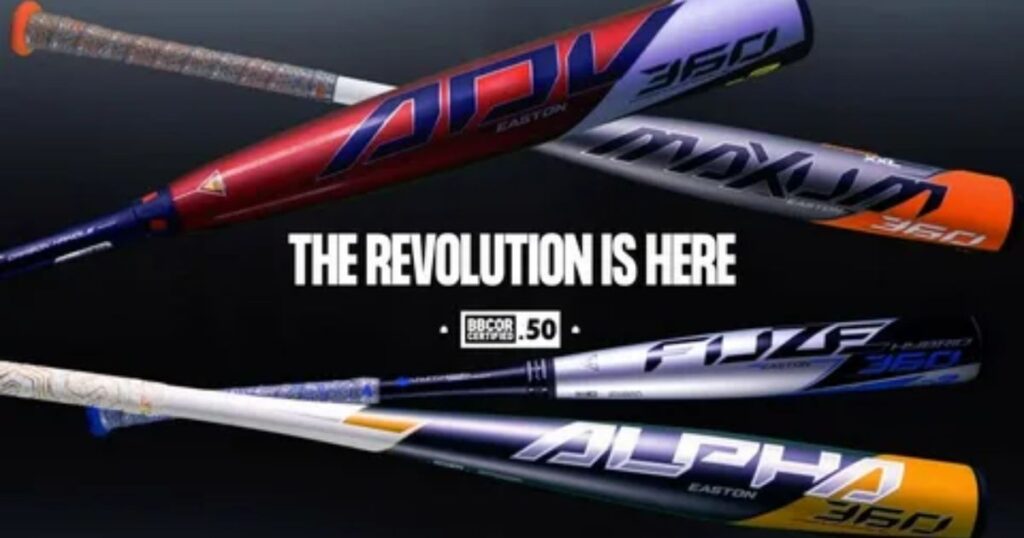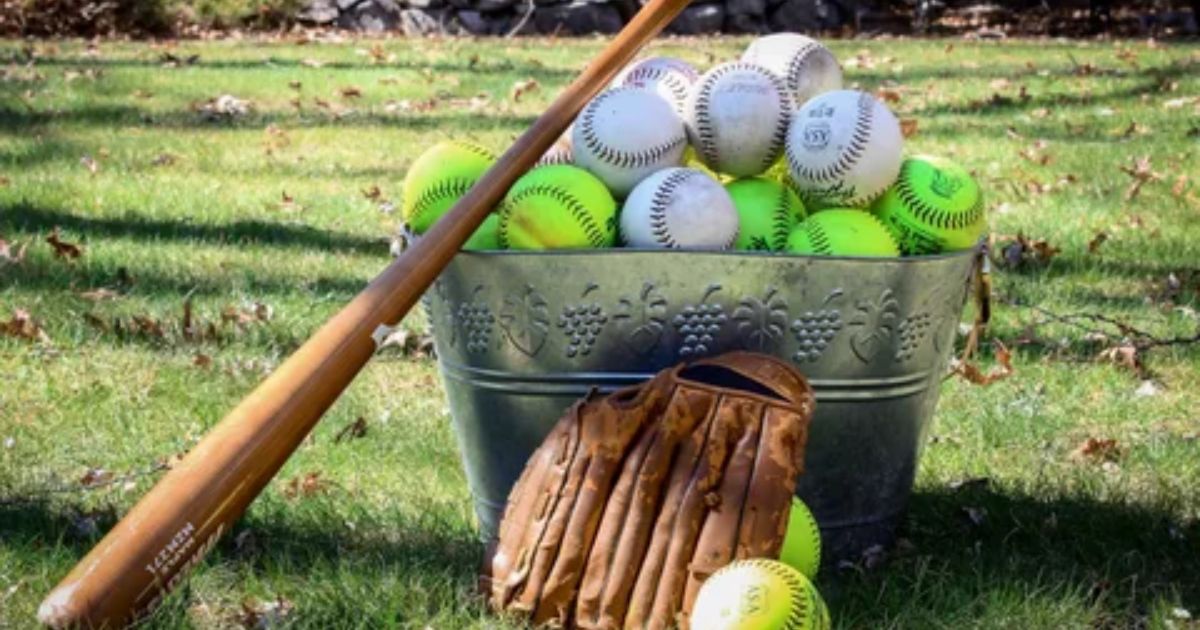Softball, a sport cherished by many, hinges on a crucial element that often goes unnoticed: the softball bat. It’s not just a piece of sporting equipment; it’s the extension of a player’s skills, a conduit for their power, and a determinant of their success on the field.
Understanding the materials that constitute a softball bat is not merely a matter of curiosity; it’s a fundamental aspect of excelling in this game. It’s about making an informed choice, a choice that can significantly impact your performance, and ultimately, the outcome of the game.
A softball bat is not just an inanimate object; it’s your ally, your weapon, and your means of conquering the challenges on the diamond. So, let’s embark on this journey to explore the very core of the game and unveil the secrets of what makes these bats such vital tools in the world of softball.
History of Softball Bats
Softball bats have come a long way since the sport’s inception. In the early days, players used a variety of materials for their bats, ranging from broom handles to simple wooden sticks. As the sport evolved, so did the materials used in bat construction.
Modern Softball Bat Materials
In the modern era of softball, you’ll find bats made from a variety of materials. These materials can significantly affect a player’s performance, so let’s take a closer look at each of them.
Aluminum Bats
Aluminum bats are a popular choice among softball players for several reasons. They are lightweight, durable, and provide excellent pop off the barrel. The aluminum construction allows for a larger sweet spot, making it easier to connect with the ball and throw a softball harder.
Composite Bats
Composite bats are constructed using a blend of materials, including carbon fiber. These bats are known for their flexibility, which translates to an increased trampoline effect. This means the ball comes off the bat with impressive speed and power.
Wood Bats
Wooden softball bats offer a more traditional feel to the game. Many professional players prefer wooden bats for their solid, natural feel. While they may not have the same pop as aluminum or composite bats, wooden bats require a high level of skill to use effectively.
Hybrid Bats
Hybrid bats combine the best of both worlds by blending different materials. They often have a composite handle and an aluminum barrel. This design enhances the trampoline effect while maintaining the solid feel of a wooden handle.
Here’s a table highlighting how softball bats made of different materials perform in various circumstances:
| Circumstances | Aluminum Bats | Composite Bats | Wood Bats | Hybrid Bats |
| Durability | Highly Durable | Durable | Moderate Durability | Balanced Durability |
| Weight and Balance | Lightweight and Balanced | Balanced with Flex | Balanced and Heavier | Balanced with Flex |
| Pop Off the Barrel | Excellent | Impressive | Traditional Feel | Solid Pop |
| Trampoline Effect | Good | High | Minimal | Balanced |
| Sweet Spot Size | Large | Moderate | Smaller | Balanced |
| Performance in Cold Weather | Maintains Performance | May Lose Flexibility | May Become Brittle | Balanced Performance |
| Skill Level Required | Suitable for All | Intermediate to Advanced | Advanced | Suitable for All |
| Price Range | Affordable | Moderate | Varies | Moderate to High |
This table provides a quick reference for how each type of softball bat material performs under different circumstances, helping players make informed choices based on their specific needs and playing conditions.
Alloy vs Composite softball bats

Each of these materials offers distinct advantages, and the choice largely depends on a player’s preferences and playing style.
Alloy Softball Bats: These bats are typically made from aluminum or a combination of aluminum and other metals. Alloy bats are known for their durability and can withstand the wear and tear of continuous use.
They are also appreciated for their lightweight design, which allows for faster swing speeds. The aluminum construction provides a larger sweet spot, making it easier for players to connect with the ball and achieve solid hits. Alloy bats are often favored by power hitters who rely on quick bat speed and the ability to send the ball far into the field.
Composite Softball Bats: On the other hand, composite bats are crafted from a blend of materials, including carbon fiber. They are celebrated for their flexibility, which translates into a trampoline effect when the ball makes contact with the bat.
This trampoline effect results in increased ball speed and power, making composite bats a preferred choice for players looking for extra pop in their hits. The flexibility of composite bats allows for better energy transfer, enabling batters to send the ball farther. While composite bats may require some break-in time to reach their full potential, many players appreciate the impressive performance they offer.
Choosing the Right Bat
Selecting the perfect softball bat is a decision that can greatly influence your performance and enjoyment of the game. It’s not just about picking a bat that looks good or is endorsed by your favorite player; it’s about finding the one that complements your playing style and maximizes your potential on the field.
To choose the right bat, you need to consider a few key factors:
Length: The length of the bat is crucial. A bat that’s too long can be challenging to control, while one that’s too short may limit your reach. It’s essential to find a balance that suits your height and swing.
Weight: The weight of the bat impacts your swing speed and power. Heavier bats can generate more force, but lighter bats allow for quicker swings. Experiment with different weights to find what feels most comfortable for you.
Material: As discussed in earlier sections of this article, the material of the bat plays a significant role. Aluminum, composite, wood, or hybrid – each has its advantages and drawbacks. The choice depends on your preferences and needs.
Barrel Size: The barrel diameter of the bat affects the size of the sweet spot. Bigger barrels offer a larger sweet spot, increasing the chances of making solid contact with the ball.
League Regulations: Before making a purchase, be aware of the rules and regulations regarding bat materials and dimensions in your softball league. Using a non-compliant bat can lead to disqualification or penalties.
Personal Feel: Ultimately, the right bat is the one that feels comfortable in your hands. Take the time to swing different bats and assess how they feel during practice. The bat should instill confidence and feel like an extension of your body.
Impact of Bat Material on Performance
The choice of bat material in softball is not a mere matter of personal preference; it can significantly influence a player’s performance. Each material possesses distinct properties that directly affect a player’s swing, power, and overall game.
Aluminum bats, for instance, are renowned for their lightweight and durability, providing a larger sweet spot that allows players to connect with the ball more effectively. This leads to increased power and a higher chance of achieving those home runs that fans cheer for.
On the other hand, composite bats offer a unique advantage with their flexibility, resulting in an enhanced trampoline effect upon contact with the ball. This translates to remarkable speed and power, making them a top choice for many players, especially those seeking an edge in their performance.
Professional players and coaches often weigh the pros and cons of different bat materials, considering the nuances of their playstyle. The bat material serves as an extension of the player’s skills, amplifying their strengths and sometimes mitigating their weaknesses..
What is the Best Material for a Softball Bat?
Selecting the best material for a softball bat is a critical decision for any player, from rookies to seasoned veterans. The choice of material directly affects your performance on the field. The primary materials used in softball bat construction are aluminum, composite, wood, and hybrid.
Each material offers unique advantages, and the best one for you depends on various factors, including your playing style, strength, and personal preferences.
Aluminum bats are renowned for their durability and lightweight design, making them an attractive choice for power hitters. They provide a larger sweet spot, enhancing the chances of making solid contact with the ball.
On the other hand, composite bats are praised for their flexibility, offering a trampoline effect that generates impressive ball speed and power. Wooden bats, while less common, provide a classic, natural feel and are favored by some professional players for their solid, traditional experience. Curious minds might wonder, “What Are Softball Bats Made Of?“ This query delves into the heart of bat construction, revealing the amalgamation of technology and tradition that shapes the game.
Hybrid bats, combining the strengths of different materials, aim to offer the best of both worlds. Ultimately, the best material for your softball bat depends on your unique needs and the characteristics that align with your playing style.
FAQs
Is there a difference between baseball and softball bats?
Yes, there is a difference between baseball and softball bats. Softball bats are shorter in length and often made from different materials, impacting their weight and performance characteristics compared to baseball bats.
Can you play softball with a wooden bat?
Yes, you can play softball with a wooden bat. Wooden bats are a traditional choice and are still used by some players, particularly in amateur and recreational leagues.
Conclusion
In conclusion, understanding the materials that make up a softball bat is a vital aspect of excelling in the game of softball. The choice between materials such as aluminum, composite, wood, or hybrid should be driven by your unique playing style and personal preferences. Your softball bat is not just a piece of equipment; it’s an extension of your skills and a powerful tool on the field.
The significance of knowing what your bat is made of extends beyond individual performance. It’s also about adhering to the rules and regulations set by softball organizations, ensuring a level playing field and player safety








